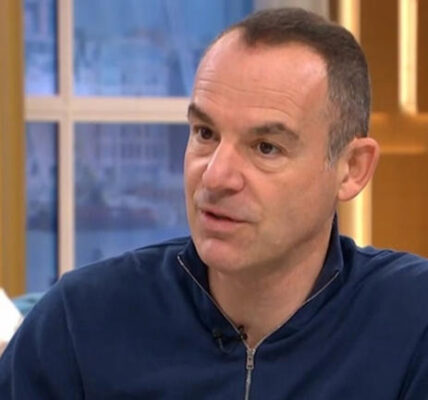Bank of England Interest Rates: A Call for Immediate Reduction
Bank of England interest rates are under scrutiny as Swati Dhingra advocates for immediate reductions. Discover why she believes this change is crucial for the UK economy.

Bank of England Monetary Policy Committee member Swati Dhingra speaks during an event in London, Britain March 8, 2023. REUTERS/Hannah McKay/ File Photo
© Thomson Reuters
Introduction: The Current State of Bank of England Interest Rates
Bank of England interest rates have been a hot topic recently, especially as Swati Dhingra, a member of the Bank’s Monetary Policy Committee, pushes for an immediate cut. With inflation seemingly under control, Dhingra argues that now is the time to lower borrowing costs to help improve living standards in Britain.
Why Lowering Bank of England Interest Rates is Crucial
Swati Dhingra believes that maintaining high interest rates is unnecessarily squeezing the public. According to her, reducing the Bank of England interest rates can help ease the financial burden on households and businesses.
Dhingra’s Voting History on Bank of England Interest Rates
Since February, Dhingra has consistently voted to cut the Bank of England interest rates from their 16-year high of 5.25%. Her stance was recently supported by Deputy Governor Dave Ramsden. However, the majority of the Monetary Policy Committee, consisting of seven other members, have opted to keep the rates unchanged.
Market Expectations and Predictions
Investors are currently divided on what will happen next with the Bank of England interest rates.This potential move could mark a significant shift in the Bank’s approach to managing the economy.
Understanding the Inflation Dynamics
Dhingra points out that the demand in Britain is too weak to trigger another spike in inflation. In May, inflation returned to the BoE’s 2% target, further supporting her argument for lowering the Bank of England interest rates.
Implications for the Real Economy
Reducing the Bank of England interest rates could have a positive ripple effect on the real economy. Lower borrowing costs can encourage consumer spending and business investments, potentially boosting economic growth. Dhingra’s call to action suggests that this move is necessary to prevent further economic stagnation.
Opposition and Counterarguments
Despite Dhingra’s compelling arguments, not everyone agrees with the push to lower the Bank of England interest rates. The majority of the Monetary Policy Committee has been hesitant to reduce rates, likely due to concerns about potential future inflation or other economic uncertainties. This division highlights the complexities of monetary policy and the challenges of balancing growth with stability.
Historical Context of Bank of England Interest Rates
Looking back at the historical context, the Bank of England interest rates have fluctuated significantly over the years. The current rate of 5.25% is a 16-year high, indicating a period of tightened monetary policy aimed at controlling inflation. Understanding this history helps to contextualize the current debate and the potential impact of rate changes.
Potential Benefits of Lower Bank of England Interest Rates
Lowering the Bank of England interest rates could bring several benefits:
- Reduced Borrowing Costs: For both consumers and businesses, lower rates mean cheaper loans, which can lead to increased spending and investment.
- Economic Growth: Increased spending can stimulate the economy, potentially leading to higher GDP growth.
- Improved Living Standards: Lower interest rates can alleviate financial pressures on households, improving overall living standards.
Challenges and Risks
However, there are also risks associated with reducing the Bank of England interest rates:
- Future Inflation: There is always a risk that lower rates could eventually lead to higher inflation if the economy overheats.
- Economic Dependencies: The economy might become too dependent on low rates, making it difficult to raise them in the future without causing disruptions.
- Financial Stability: Rapid changes in interest rates can impact financial markets and institutions, potentially leading to instability.
Conclusion: The Path Forward for Bank of England Interest Rates
The debate over Bank of England interest rates is a complex one, with valid arguments on both sides. Swati Dhingra’s call for immediate rate cuts is rooted in a desire to alleviate financial pressure on households and businesses, potentially spurring economic growth. However, the cautious stance of the majority of the Monetary Policy Committee reflects the delicate balance between fostering growth and maintaining stability.
As the August 1 announcement approaches, all eyes will be on the Bank of England to see if they heed Dhingra’s call or maintain the status quo. Regardless of the outcome, the discussion highlights the importance of careful and informed decision-making in shaping the future of the UK economy.
ALSO READ:
Mortgage Rate Cuts: 5 Incredible Deals You Can’t Miss



